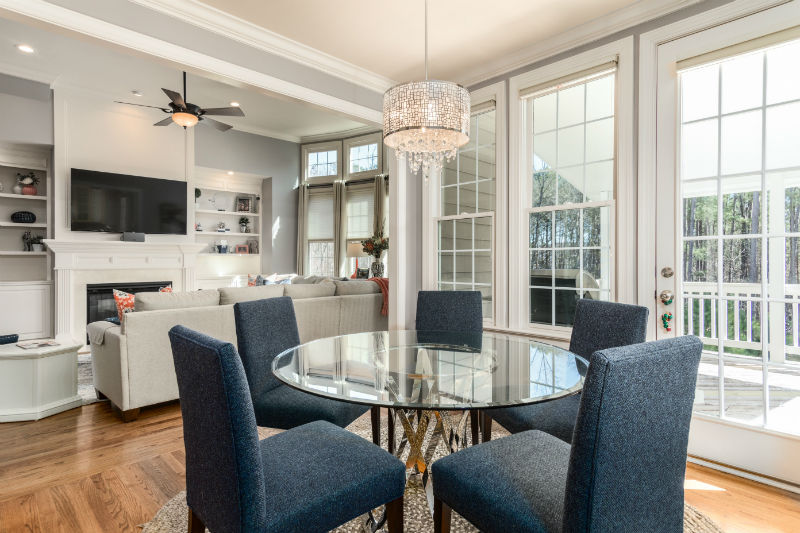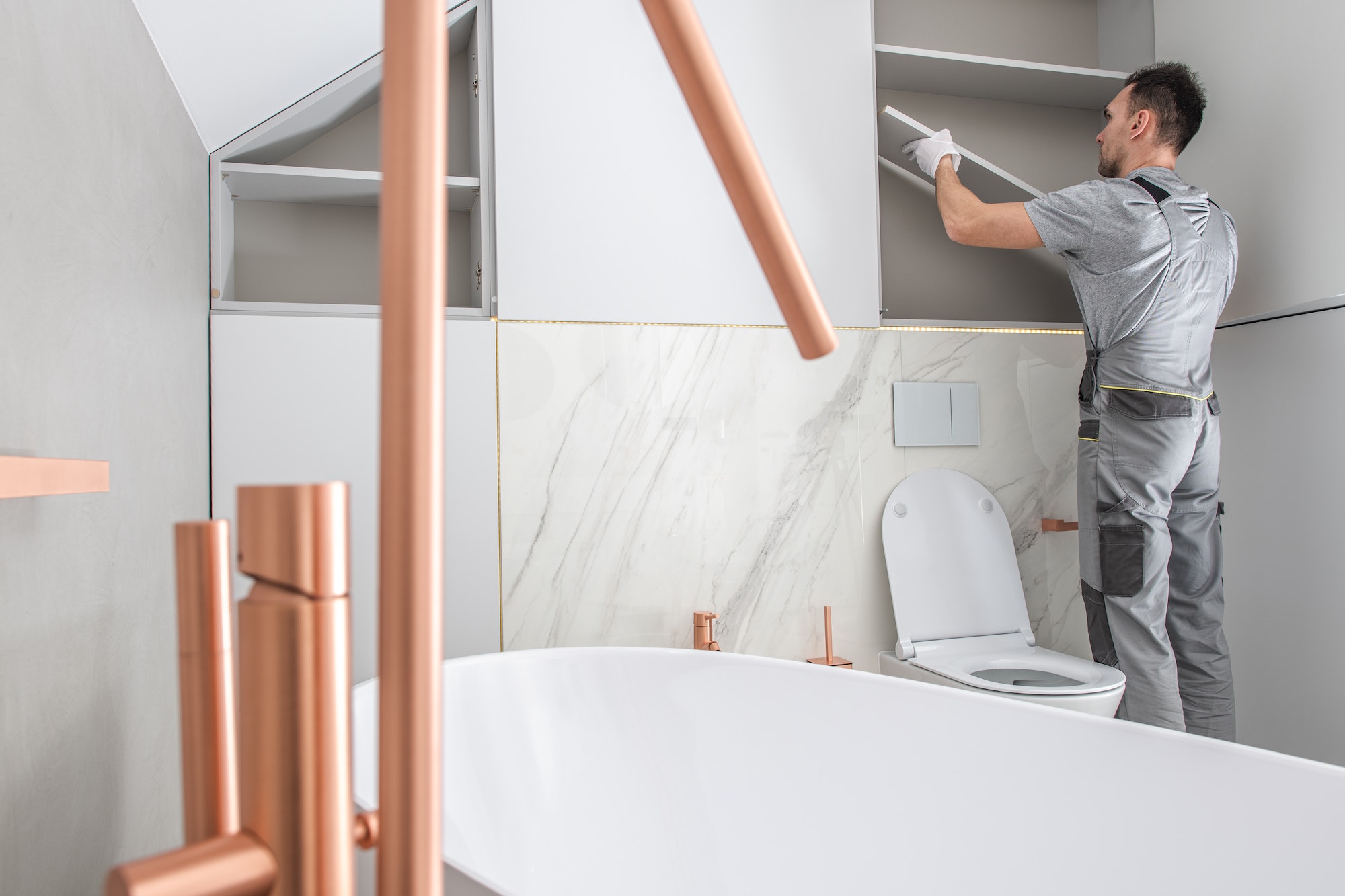In today’s fast-paced world, where remote work is becoming increasingly common, a functional and comfortable home office space is essential. Not only does it help you stay organized and focused, but it also promotes a healthy work-life balance. Creating the perfect home office may seem daunting, but with some planning and creativity, it’s entirely achievable. In this article, we’ll explore different aspects of designing a home office that caters to your needs, including room selection, storage solutions, and ergonomic considerations.
- 1 Finding the Perfect Room for Your Home Office
- 2 Choosing the Right Furniture for Your Home Office
- 3 Utilizing Wall Space and Storage Solutions
- 4 Personalizing Your Home Office with Lighting and Decor
- 5 Integrating Technology and Connectivity in Your Home Office
- 6 Creating a Healthy and Balanced Work Environment
Finding the Perfect Room for Your Home Office
The first step in designing your home office is to choose the right room. This decision will depend on your specific needs and the available space in your home. Here are some factors to consider when selecting a room for your office:
- Size: The room should be large enough to accommodate your desk, chair, storage, and any additional equipment you need for your work. A small room may feel cramped and hinder your productivity, while a larger room offers greater flexibility and room to grow.
- Location: Choose a quiet, low-traffic area in your home to minimize distractions. A room away from the main living areas, such as a spare bedroom, attic, or basement, could be an ideal choice.
- Natural Light: Ample natural light is essential for a healthy work environment. Select a room with large windows that allow sunlight to stream in. This will not only boost your mood but also reduce eye strain and fatigue.
- Privacy: Your home office should offer privacy to help you concentrate and maintain a professional atmosphere for video calls and meetings. Ensure the door can be closed or consider adding soundproofing measures if necessary.
Remember, adapting an existing room into a home office may require some modifications, such as adding electrical outlets, lighting, or wall coverings. Ensure you have the necessary permissions and proper planning before making any drastic changes.
Choosing the Right Furniture for Your Home Office
Investing in high-quality, ergonomic office furniture is crucial for your comfort, health, and productivity. Here are some tips on selecting the right furniture for your home office:
Office Desk
Your desk is the heart of your home office, so choose one that meets your needs and complements the room’s design. Here are some factors to consider before making a purchase:
- Size: Ensure the desk is large enough to accommodate your computer, keyboard, mouse, and any other essential work items. A desk that is too small may impact your ability to work efficiently, while a larger desk offers space for your work materials and keeps your workspace organized.
- Shape: There are various desk shapes available, such as rectangular, L-shaped, or corner desks. Choose one that suits your room layout and maximizes available space.
- Storage: Look for a desk with built-in storage options like drawers or shelves to keep your work area clutter-free.
- Adjustability: An adjustable desk, such as a sit-stand desk, allows you to change your working position throughout the day, reducing the risk of developing health issues related to prolonged sitting.
Office Chair
A comfortable, ergonomic office chair is essential for maintaining good posture and reducing the risk of back pain, especially if you spend long hours sitting at your desk. Here are some features you should look for in an office chair:
- Lumbar Support: A chair with proper lumbar support promotes a healthy sitting posture and relieves pressure on your lower back.
- Adjustability: Look for a chair with adjustable height, armrests, seat tilt, and backrest, allowing you to customize it for optimal comfort and support.
- Material: Choose a chair made from breathable, high-quality materials to prevent overheating and ensure durability.
- Swivel and Casters: A swivel chair with casters allows you to move easily and access different parts of your workspace without straining your body.
Utilizing Wall Space and Storage Solutions
An organized workspace is crucial for productivity and reduces stress. Here are some ideas to make the most of your wall space and create a clutter-free environment:
- Shelving: Installing shelves on your walls provides additional storage for books, files, and decorative items.
- Pegboards: A pegboard is a versatile wall-mounted storage solution that allows you to hang various office supplies, keeping them within easy reach.
- Cabinets: Wall-mounted cabinets offer concealed storage for a cleaner, more streamlined look.
- Magnetic Boards: Use magnetic boards to display important notes, reminders, or inspirational quotes.
- Whiteboards: A whiteboard is a practical addition to your home office for brainstorming, planning, or tracking progress on projects.
Personalizing Your Home Office with Lighting and Decor
The final step in creating a functional and inspiring home office is adding lighting and personal touches that reflect your style. Here are some ideas:
- Task Lighting: Good task lighting is essential to prevent eye strain and fatigue. Choose a desk lamp with adjustable brightness and position it to avoid glare on your computer screen.
- Ambient Lighting: Create a warm, inviting atmosphere with ambient lighting such as floor lamps or wall sconces.
- Decor: Personalize your workspace with artwork, potted plants, or meaningful objects that inspire you and make your office a pleasant place to spend time.
- Color Scheme: Choose a color scheme that promotes focus and productivity, such as calming blues or energizing yellows.
With careful planning, a functional home office space can be created in almost any home. By considering factors such as room choice, furniture, storage, and decor, you can design a workspace that fosters productivity and supports your well-being.
Integrating Technology and Connectivity in Your Home Office
Integrating technology is crucial for a functional home office, as it helps streamline your work processes and ensures you stay connected with your team or clients. Here are some tips for incorporating technology into your office space:
- Internet Connection: A stable and fast internet connection is a must for remote work. Assess your current connection, and upgrade your plan or switch providers if necessary. Consider investing in a Wi-Fi mesh system to ensure strong signals in every corner of the room.
- Power Outlets and Cable Management: Make sure there are enough power outlets to accommodate all your devices, such as computers, printers, and chargers. Conceal cables using cable management solutions like cable clips, sleeves, or under-desk trays to maintain a clean and organized workspace.
- Computer Setup: Choose a computer setup that meets your work requirements, be it a laptop, desktop, or a combination of both. If you work with multiple screens, invest in a monitor stand or arm to save desk space and create an ergonomic viewing angle.
- Peripheral Devices: Equip your home office with essential peripheral devices like a printer, scanner, or external hard drives. Choose devices that are compatible with your computer and can be connected via USB or wirelessly.
- Video Conferencing Equipment: With remote work, video calls have become a crucial communication tool. Ensure you have a high-quality webcam, microphone, and speaker system for clear audio and visuals during online meetings.
By incorporating these technological aspects into your home office, you can enhance your productivity and make your work-from-home experience more seamless and enjoyable.
Creating a Healthy and Balanced Work Environment
Achieving a healthy work-life balance is essential for your overall well-being, especially when working from home. Here are some ideas to create a balanced work environment in your home office:
- Establish Boundaries: Set strict boundaries between your work and personal life. This includes having a designated work schedule, taking regular breaks, and avoiding work-related tasks outside your office space.
- Incorporate Movement: Find ways to incorporate movement and exercise into your daily routine. Use a standing desk, take short walks during breaks, or schedule a workout before or after work to maintain an active lifestyle.
- Stay Organized: Keep your workspace tidy and clutter-free by regularly organizing your desk, files, and digital documents. A clean and organized environment helps reduce stress and improve focus.
- Stay Connected: Maintain regular communication with your colleagues, friends, and family. Schedule virtual coffee breaks, attend online events, or participate in group chats to stay connected and foster a sense of belonging.
By prioritizing your well-being and maintaining a healthy work-life balance, you can create an environment that fosters productivity and happiness in your home office.
Creating a functional home office space may seem challenging, but with careful planning and consideration, it can be achieved in any home. By selecting the right room, investing in ergonomic furniture, utilizing wall space, integrating technology, and prioritizing your well-being, you can design a workspace that caters to your needs, promotes productivity, and supports a healthy work-life balance. Happy working!




